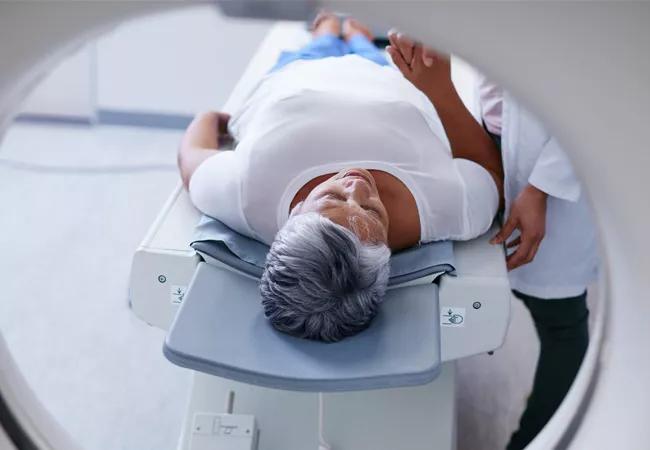Advertisement
Frequency and impact

By Lillie Morgan, MD, Humberto Choi, MD, and Peter Mazzone, MD, MPH
Advertisement
Cleveland Clinic is a non-profit academic medical center. Advertising on our site helps support our mission. We do not endorse non-Cleveland Clinic products or services. Policy
The low-dose chest CT scan used for lung cancer screening frequently demonstrates incidental findings in the anatomic structures imaged from the neck to the upper abdomen. Few studies have addressed these incidental findings, none of which has been in an actual clinical setting.
Our group set out to define the frequency of incidental findings found on low-dose CT for lung cancer screening and determine their clinical and financial downstream effects.
The Cleveland Clinic lung cancer screening program was implemented in 2012. It is a multidisciplinary program structured to meet the core components of a high quality screening program outlined by the American Thoracic Society and American College of Chest Physicians. Our program uses clinical care paths which guide the management of common incidental findings such as coronary artery calcification and thyroid nodules. These care paths are based on specialist expertise and national guidelines.
We recently published a study analyzing the presence of any incidental finding on the baseline low-dose CT scan. We reviewed 320 patients who participated in our lung cancer screening program from April 2015 to February 2016. Virtually every patient had at least one abnormality other than a lung nodule described on the radiology report with 15 percent of patients undergoing further evaluation of an incidental finding.
Advertisement
The most frequently reported findings were in the respiratory (69.6 percent) and cardiovascular (67.5 percent) systems. COPD was a known comorbidity in 31.6 percent of patients, but local emphysema was reported in 50.6 percent. Only 1.8 percent of these patients required further evaluation for pulmonary abnormalities. In contrast, 15.3 percent of cardiovascular findings resulted in cardiology consultation or further testing. This discrepancy is likely explained by the existence of clinical care paths to guide the management of coronary artery calcification and aortic aneurysms, and to the lack of evidence suggesting management changes for incidental radiographic findings related to COPD in asymptomatic patients.
Among the patients included in our study, two were diagnosed with lung cancer and received definitive treatment. Other serious diagnoses found during the evaluation of the incidental findings included severe triple vessel coronary artery disease which resulted in coronary artery bypass grafting in one patient, and two patients with renal cell carcinomas that resulted in partial nephrectomies.
Reimbursement for the screening, including all downstream evaluation after the low-dose CT including the evaluation of screen detected incidental findings, averaged $817 per screened patient. Of the total reimbursement, 46.2 percent was related to the evaluation and treatment of incidental findings.
Our data showed that incidental findings on low-dose CT scan for lung cancer screening are common. Virtually every patient had at least one incidental finding and one out of every seven patients had further evaluation. The downstream testing and procedures that resulted from these incidental findings contributed significantly to the overall reimbursement of screening.
When developing a lung cancer screening program, the burden of incidental findings should be anticipated, and the possible consequences of incidental findings should be discussed with patients during shared decision-making visits. While more research is necessary to understand the benefits and harms of evaluating these incidental findings, screening programs should be prepared to manage them, or to provide recommendations for management informed by national guidelines to the ordering provider.
Drs. Choi and Mazzone are staff in the Respiratory Institute. Dr. Morgan is a fellow in the Respiratory Institute.
Advertisement
Advertisement

Polygenic risk score could help predict who will develop this aggressive breast cancer

New guidelines offer insight into emerging therapies, dental issues and more

Clinical trial to assess the value of nutritional, physical therapy and social supports prior to preoperative chemotherapy

Research demonstrates improved overall survival for patients receiving comprehensive treatment for breast cancer in addition to radiation or surgical intervention for brain cancer

Platinum-eligible phase 3 trial of enfortumab vedotin and pembrolizumab yields ‘unprecedented data’

Cleveland Clinic Cancer Institute brings multidisciplinary care, precision oncology and clinical research to the United Arab Emirates

Extent of baseline burden impacts progression-free and overall survival

Further study warranted to better understand the clinical implications of these findings